Starting your own food blog is fun, challenging, and potentially very profitable.
Want proof? Check out these real-life examples:
- 40aprons.com – $31,000/month
- midwestfoodieblog.com – $23,000/month
- stephaniessweets.com – $20,375/month
If you want to learn how to start a food blog, you’re in the right place.
Authority Hacker has over a decade of experience building profitable blogs, and we’ve broken down the complexity of starting a food blog into 10 simple, actionable steps.
How to Start a Food Blog in 10 Steps
Here are 10 steps you can follow to start your very own successful food blog today and make money .
1 Narrow Down Your Food Niche
The food blog niche is very competitive, so “niching down” into a more focused topic can make it easier to succeed.
Not only will you rank better on search engines due to increased topical authority, but it can also help build a following through more focused branding.
Food Niche Examples
There are many ways you can niche down, including:
- Type of cuisine (Italian)
- Type of food (Seafood)
- Location (New Orleans)
- Dietary restrictions (Nut-free)
- Cooking methods (Air frying)
- Occasions (Picnic food)
It’s important you’re passionate about the sub-niche you choose. It’s okay if you’re not an expert, but true success in food blogging requires participating in your niche.
One non-expert success story is that of Chocolate Covered Katie, a food blogger who dropped out of college to focus on her blog full-time.
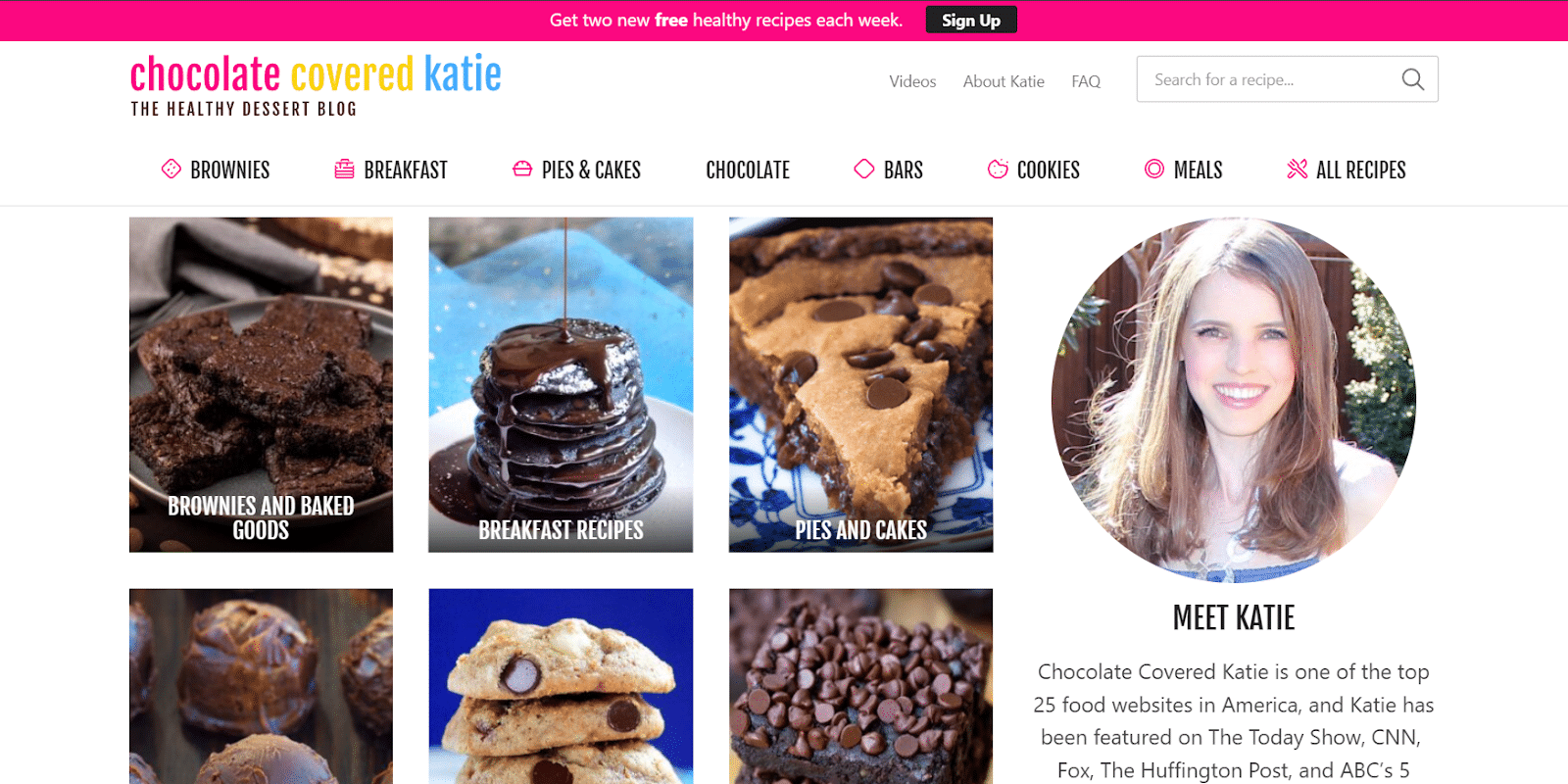
From her humble beginnings, she’s grown her blog to nearly 1,000,000 pageviews per month and has been featured on The Today Show, CNN, Fox, and other television networks.
Research Your Target Audience and Sub-Niche
Once you’ve chosen a few potential sub-niches, it’s time to qualify your research with hard data.
The best way to do this is to examine successful food blogs and see which niches other food bloggers are succeeding in.
Here’s how you can identify profitable food blogs:
- Make a list of blogs in your prospective niche. You can find them by searching Google for keywords you might write about. For example, if I were making an air frying food blog, I could search for “best air fryer recipes” and see if any air frying blogs show up.
- Check how much organic traffic the blog is getting. You can use the Semrush tool to find traffic estimates. Sign up for their 7-day free trial, go to the Traffic Analytics section in the left menu, and analyze the websites you find.

That’s it! Food blogs are pretty easy to monetize through display ads, so if a blog is getting significant traffic, you can consider it a success.
If you can’t find any successful blogs in your prospective niche — but still think it might be a winner — use Google Trends to gauge the topic’s popularity in the organic Google search results.
It’s simple. Just go to Google Trends, type in your niche — potentially with a qualifier like “recipes” at the end to make sure you weed out non-food related searches — and see how much traction it gets.
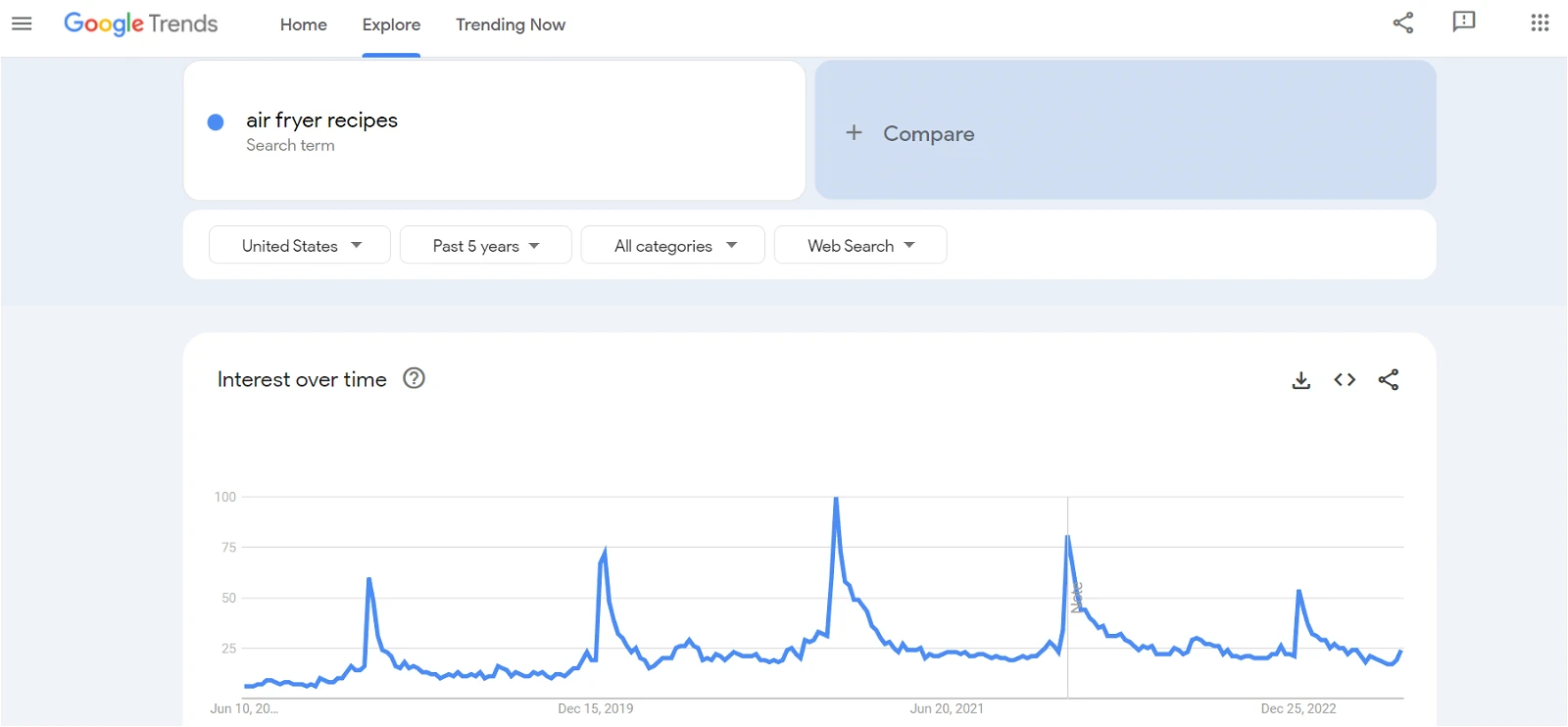
Your target audience will likely be the United States, so select the United States as your location. You can also look at a 5-year window to see if the niche is rising or falling in popularity.
2 Choose a Blogging Platform
Now that you’ve chosen your niche, it’s time to choose your blogging platform.
I recommend WordPress — out of the top 1 million sites, 28.8% use WordPress, and for good reason. It’s free, highly customizable, and easy to use. Plus, it has many third-party plugins that enhance your site’s functionality.
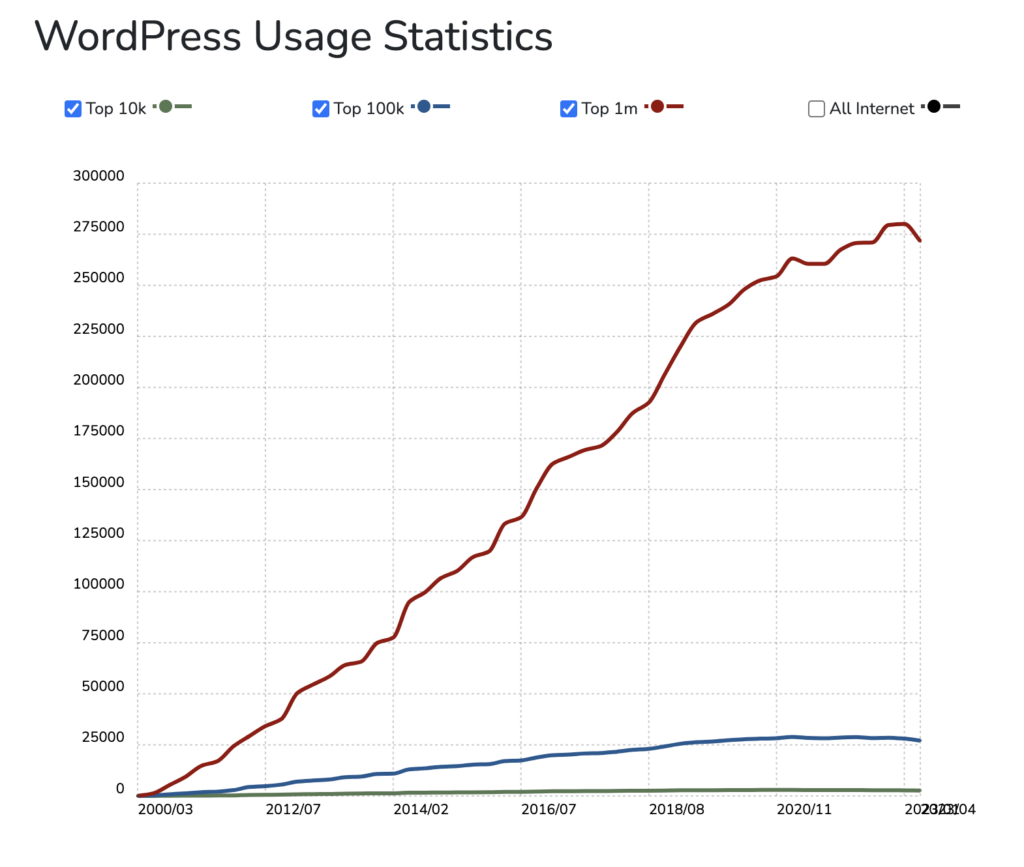
You can use any platform you want, but I must warn you that this guide is written with WordPress in mind, so much of it will be of little use if you choose another platform.
For alternatives, check out our guide to the best blogging platforms. Assuming you choose WordPress, you’ll install it once you get a web host, which we’ll get to in a little bit.
Also, as tempting as it may be to use a pre-made platform like Medium.com, owning your own site is essential for having control and monetizing.
You won’t be able to show display ads, recommend affiliate products, or collect email addresses — all of which are essential for monetizing your food blog.
You’re also at the mercy of the platform, which can shut down your account at any time.
Even though the technical stuff we’re about to dive into can seem daunting, trust me when I say your best bet is to push through and learn how to create your own website.
3 Choose a Domain Name
A domain name is a unique address for a website. It consists of the website name and a domain name extension, such as .com, .net, or .org.
For example, myairfryerkitchen.com is a domain name.
To be clear, this is the name people type in to find your food blog. It’s also the name they see when they view your website on the search engine results page (SERP).
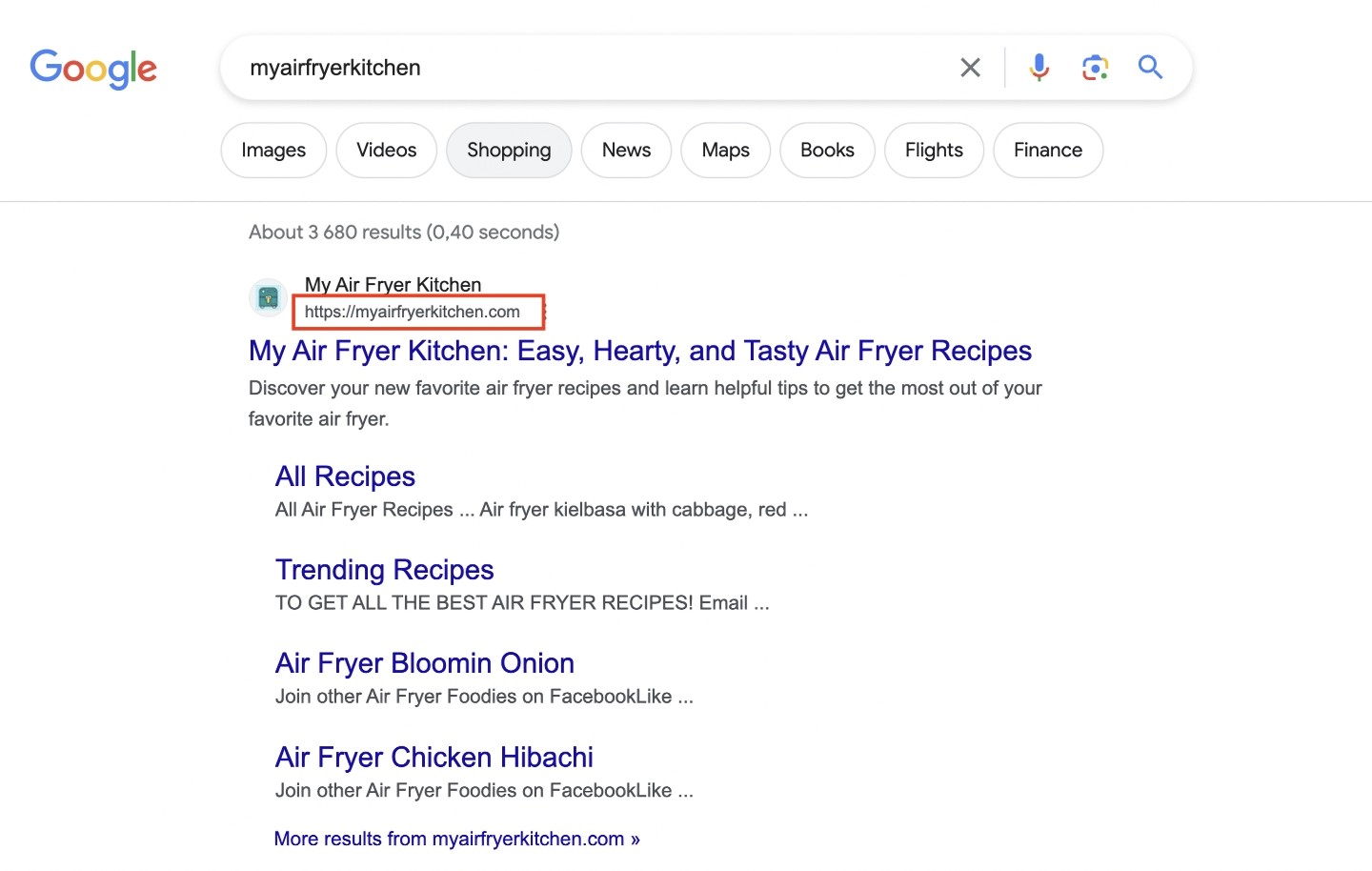
Here are some tips for choosing a great domain name:
Pick something related to your niche. Choosing a name that instantly tells people what your food blog is about is great for branding. For example, if I’m making a food blog about seafood, “SeafoodHub.com” would be a great blog name.
Keep it short. Shorter names are easier to remember.
Make it unique. If it leaves an impression and is easy to remember, readers will be more likely to come back and tell others about your site.
Common top-level domain (TLD). This is the extension at the end of your domain, such as .com, .org, or .io. I suggest a .com domain, as the ubiquity of .com can increase your credibility.
Not trademarked. Use the Trademark Electronic Search System (TESS) to make sure someone else doesn’t own your name.
Searching for a great domain name is often quite frustrating, as most of the best names are already taken.
If you want to skip the headache of checking domain availability one by one, use Brandsnap.ai to instantly find and buy available domain names. It uses AI to come up with catchy and relevant names that aren’t owned by anyone yet.
Here’s a video with step by step instructions:
4 Host Your Website
Now that your domain name is sorted, you’ll need a web host for your food blog.
A web host is a service that provides a server to store your website data, which then displays your website to anyone trying to see it.
Choosing a reliable web host can be overwhelming, as web hosting providers love to drown you in an avalanche of meaningless specs and technical jargon in an attempt to impress you.
Here’s what really matters when choosing a host:
Security. Look for a provider that offers free SSL certificates, daily backups, and malware protection.
Speed. A slow website can lead to high bounce rates and lower rankings. Look for a web hosting company that offers a content delivery network (CDN) to help speed up your food blog.
Uptime. Look for a web hosting company that guarantees at least 99% uptime.
Support. Good hosts offer 24/7 support via live chat, tickets, phone, and an extensive knowledge base.
Affordability. Don’t overpay for a web host. You can get everything you need for less than $10 per month.
Our Recommended Web Host
If you have any experience with blogging, you’ve probably heard of Bluehost.
It’s the third-most-popular web hosting service, and it’s especially popular in the blogging space due to blogging influencers pushing their lucrative affiliate program.
I don’t like Bluehost. It’s slow, and they only offer a “network server uptime agreement” instead of an actual uptime guarantee.
For a new blog, our recommended web hosting provider is Siteground.

They cover all of the bases a beginner needs:
- Affordable. Pricing starts at $2.99 per month.
- Fast and secure. They offer a free CDN, SSL certificate, malware protection, and perform automatic backups daily.
- Managed WordPress hosting with 1-click install. Managed WordPress hosting provides a lot of QoL benefits that regular hosting lacks.
- Great customer support. You’ll get 24/7 customer support via live chat, tickets, and phone.
How to Install Siteground
Here’s a step-by-step guide to help you install Siteground.
Step 1: Choose a plan
Siteground offers a range of plans to choose from. I recommend the WordPress Hosting StartUp plan, which starts at just $2.99 per month.

Step 2: Add a new website
Login to Siteground, go to the Websites tab, and click “Create Website”
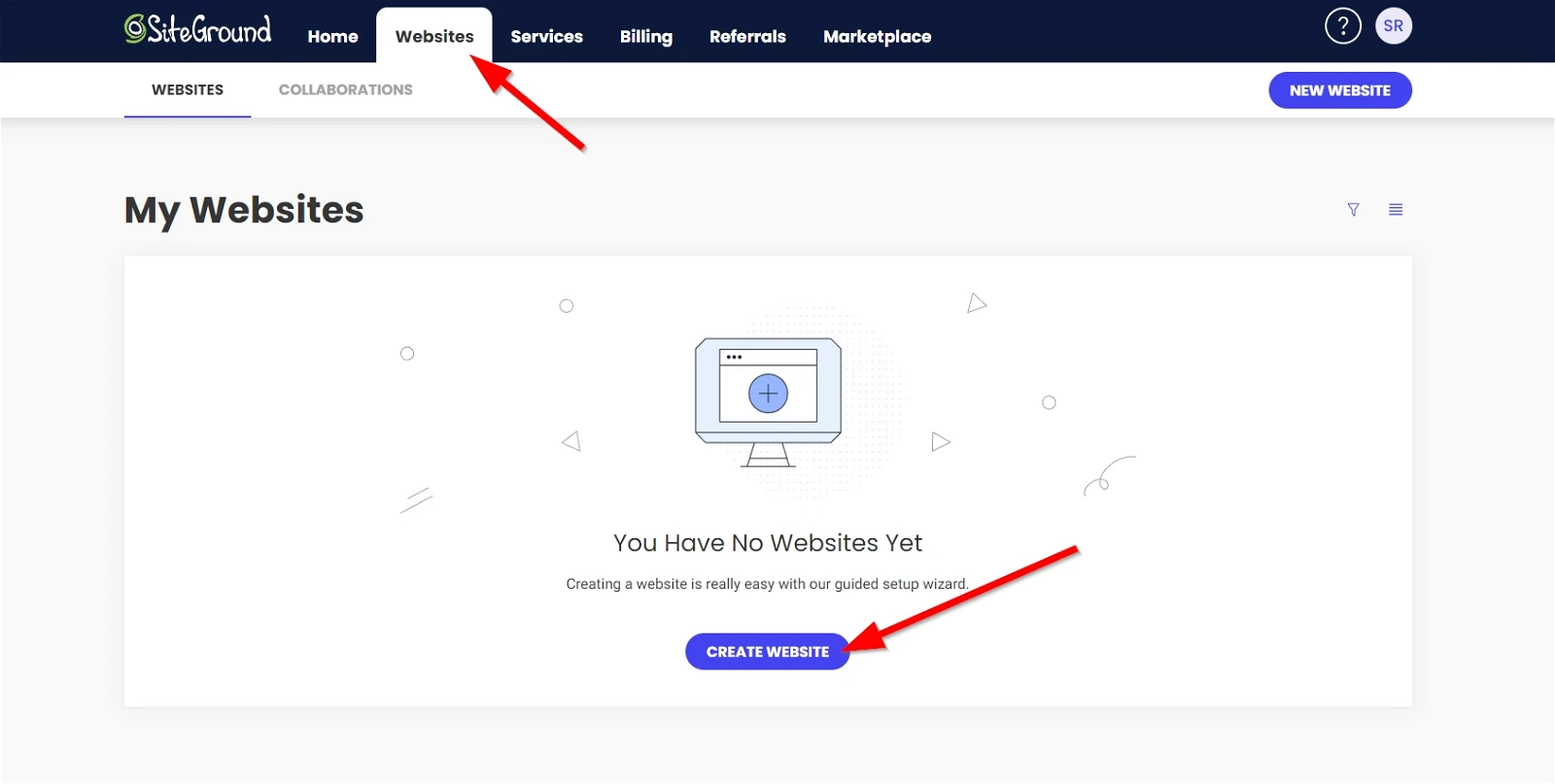
Step 3: Select “Existing Domain”

Step 4: Select “Start New Website,” choose WordPress, and set up Login info.

Step 5: Skip extras and click “Finish”
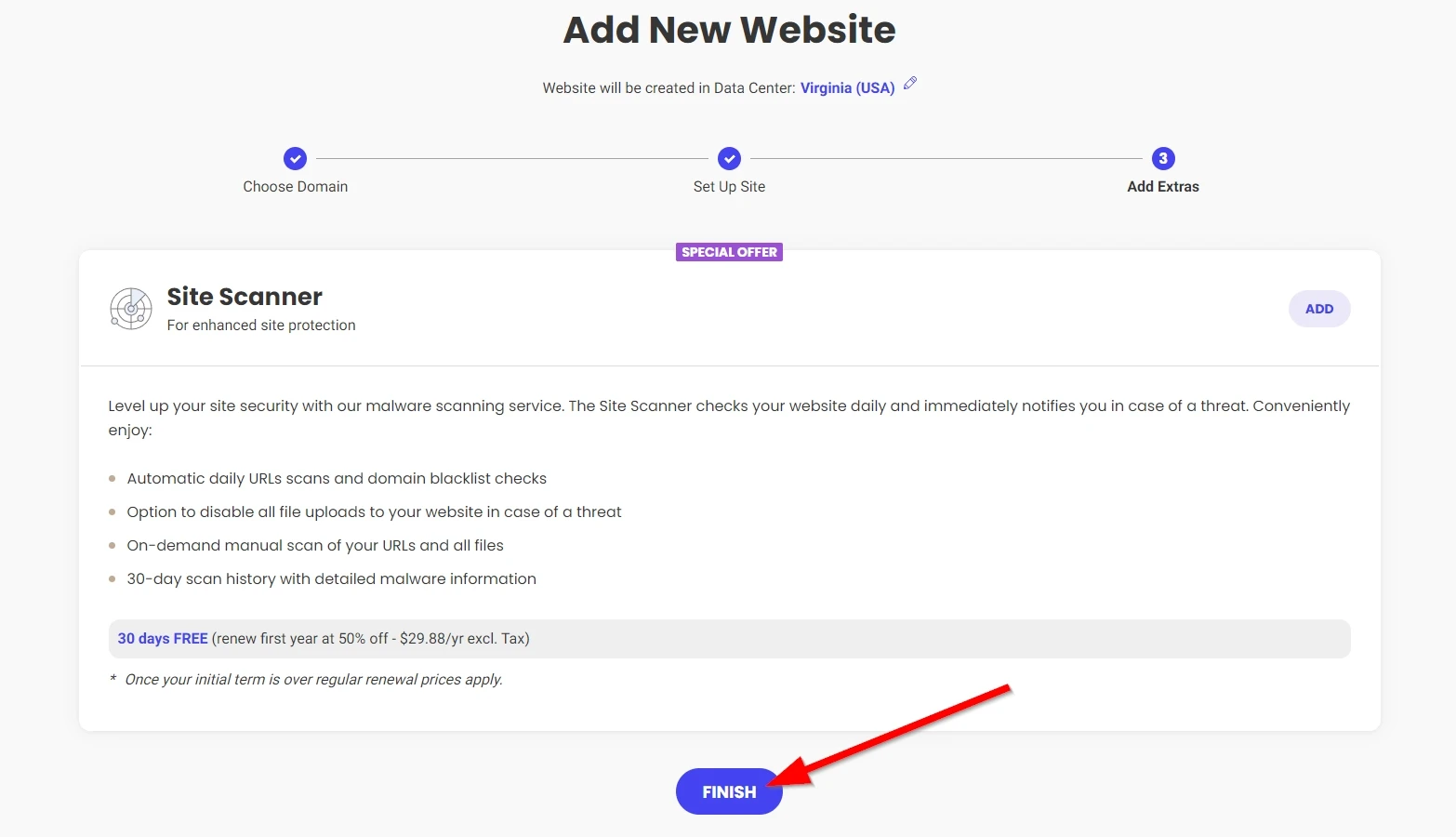
Step 6: Point your domain to Siteground.
If you need help with this, contact Siteground support. They’ll walk you through the process.
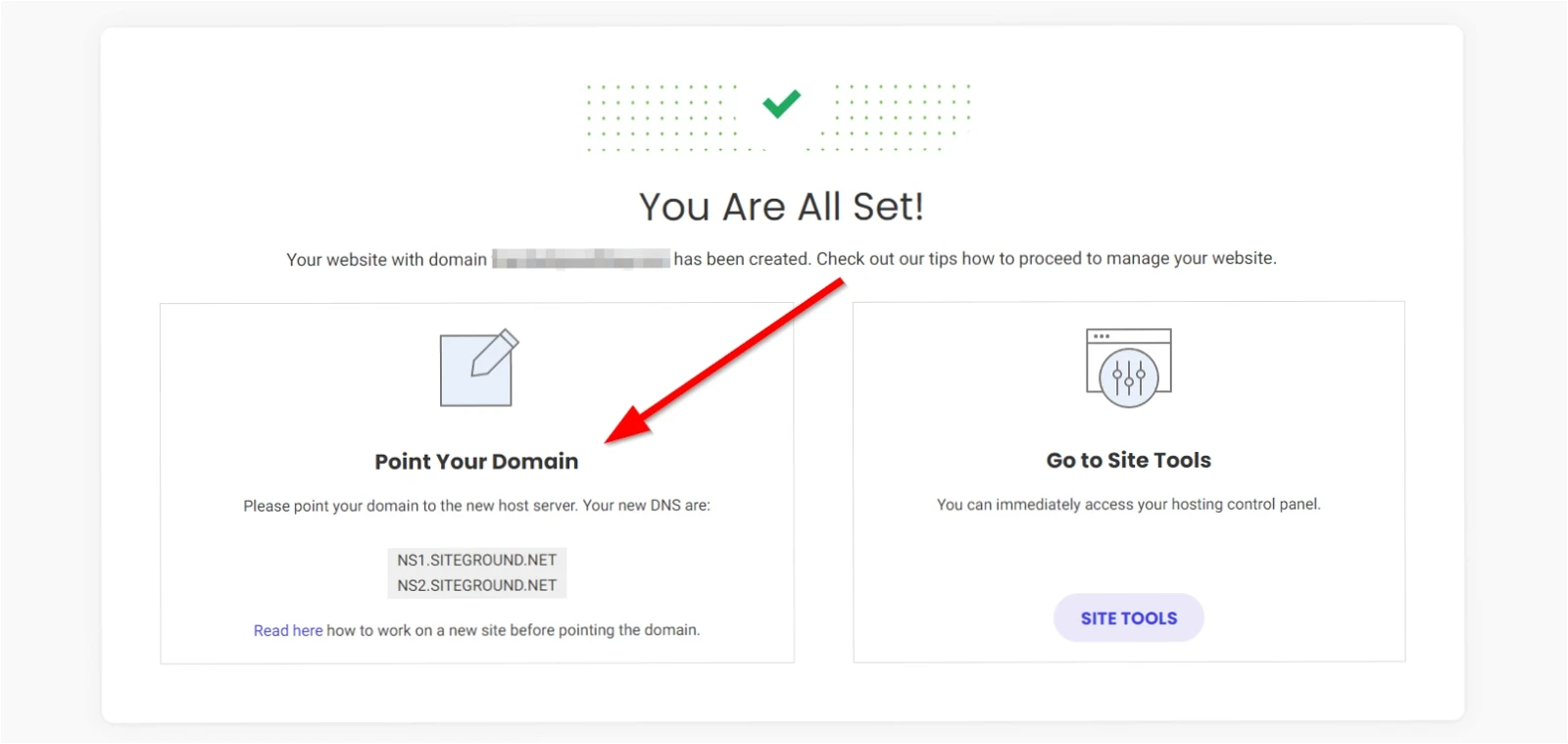
5 Choose the Right Theme and Plugins for Your Food Blog
The next step in learning how to start a food blog is to choose a good food blog theme and add essential plugins.
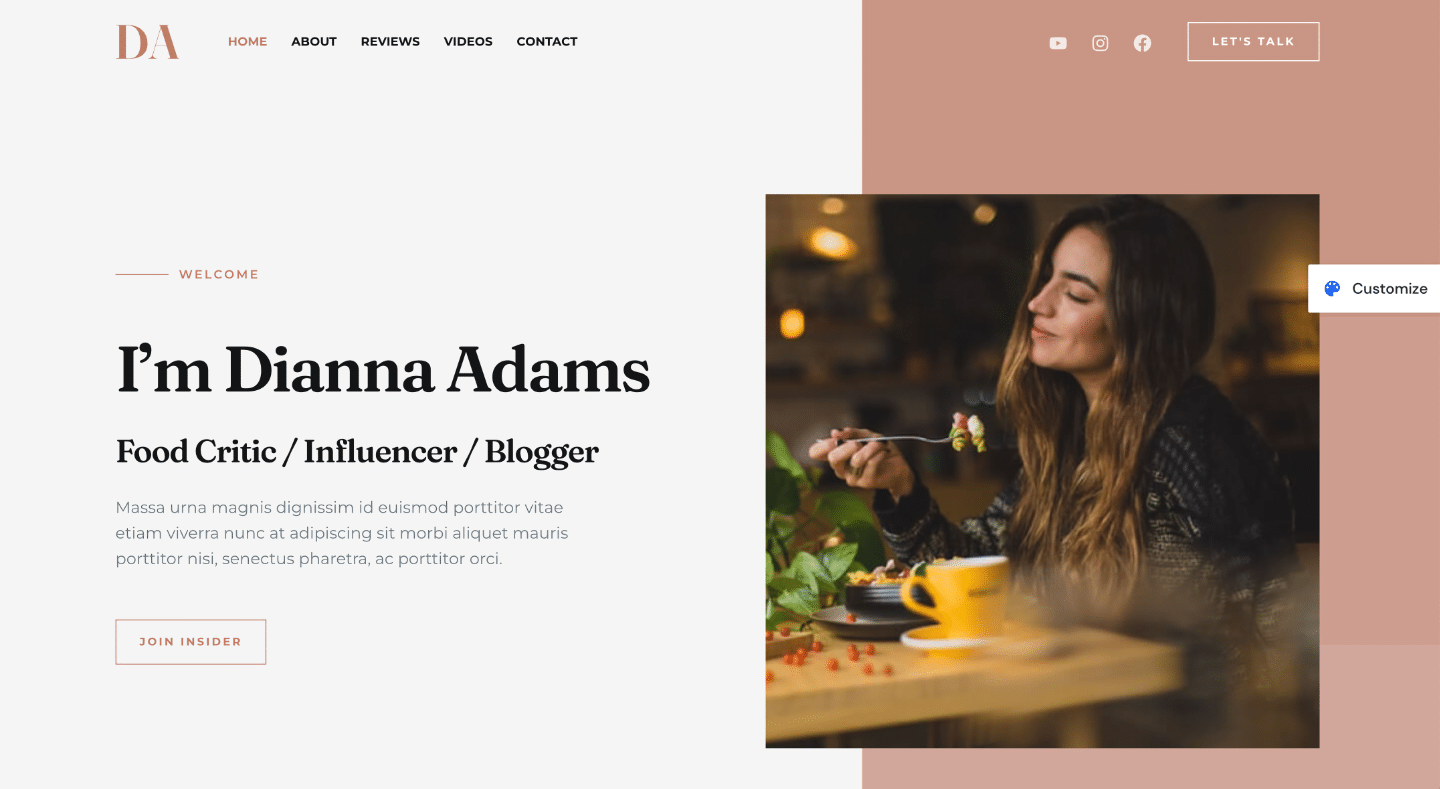
A theme is a collection of files that determine the appearance and layout of your WordPress blog.
To put it simply, a theme makes your website look nice. Pick one that looks professional and makes a good first impression.
While there are many premium food blog WordPress themes to choose from, it’s perfectly fine to start with a free theme. Some free themes are actually quite robust and offer everything a beginner needs.
If you start with a free theme, I suggest choosing one with a premium upgrade option. This gives you the ability to expand functionality without changing themes, and the developer likely won’t abandon the free theme because it generates premium sales.
Recommended Themes
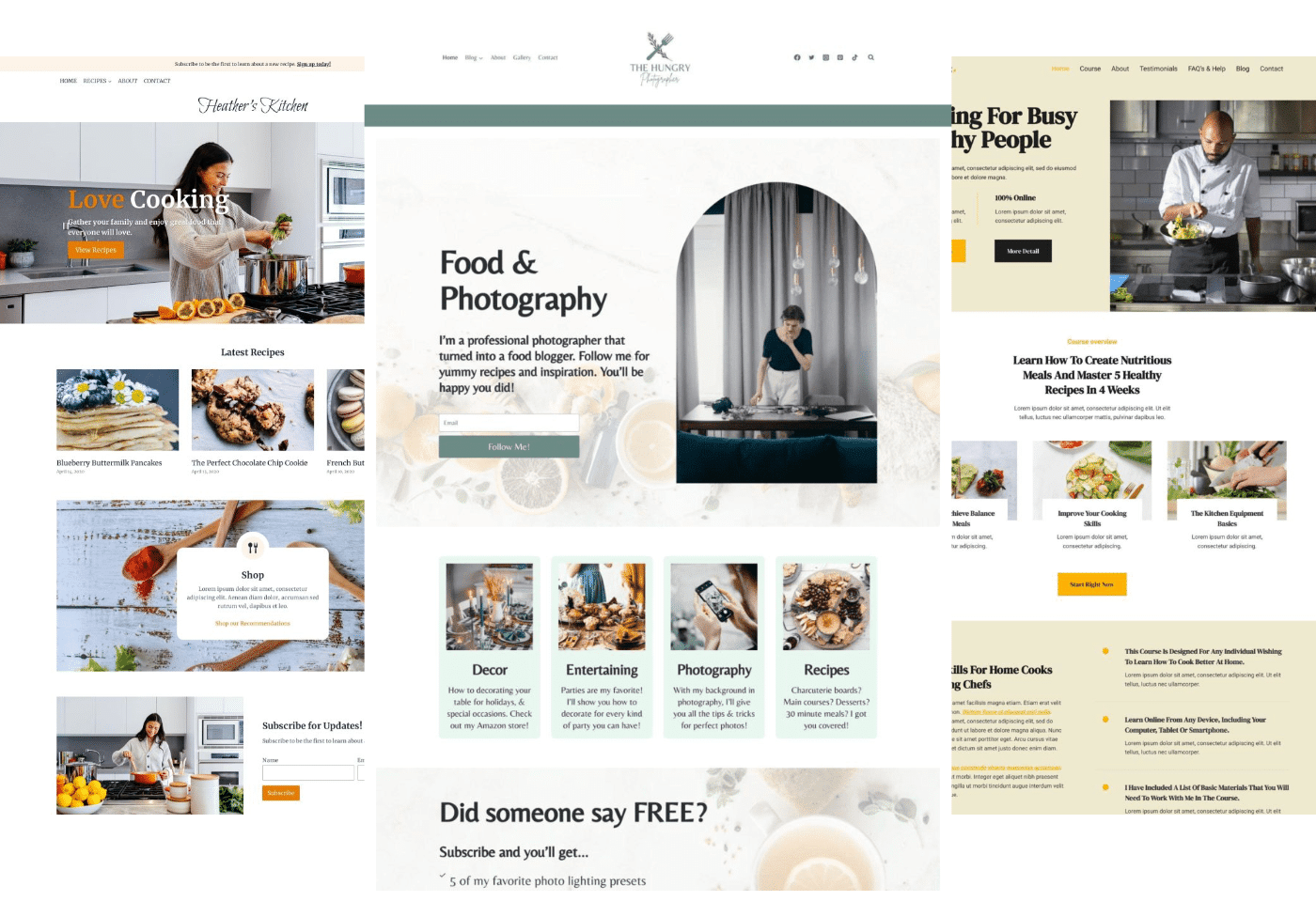
While there are thousands of WordPress themes, three of them stand above the rest: GeneratePress, Astra, and Kadence.
All of these themes have extensive template libraries, which means you can select a pre-built theme design and skip the tedious process of building your pages from scratch.
Each offers a free starter version, so don’t be afraid to try all of them and see which you like best.
Install Relevant Plugins
Now that you’ve selected your theme, it’s time to install some plugins to help you optimize for SEO, boost site speed, and add features designed specifically for food blogs.

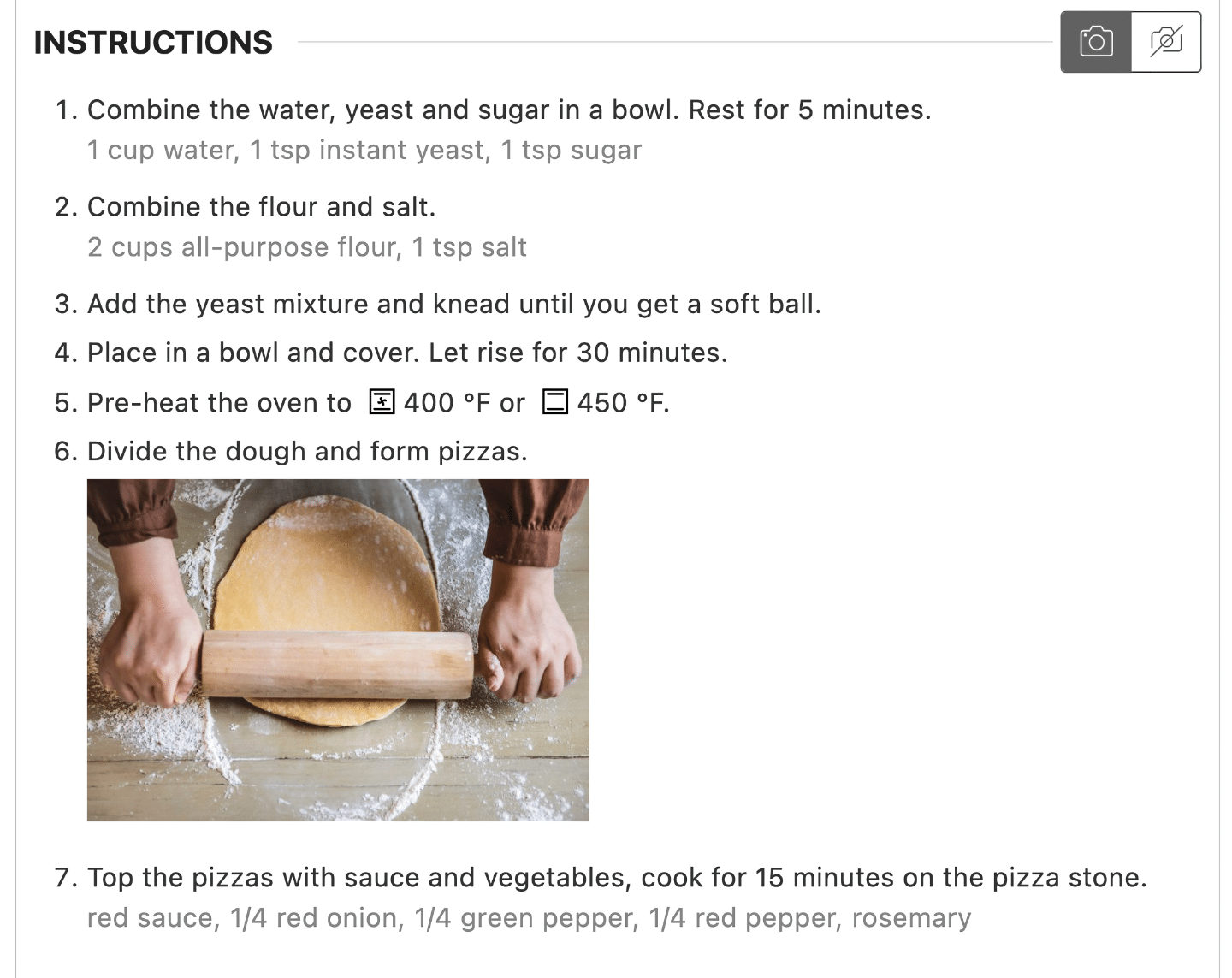
Here are four essential plugins you should add to your food blog:
- WP Recipe Maker is a must-have recipe plugin for food blogs. It allows you to add SEO-friendly recipe cards to your posts, add nutrition facts, upload video attachments, and enable your users to rate your recipes.
- RankMath is a powerful plugin that can help optimize your food blog for SEO. It provides a range of features, including rank tracking, schema markup, and XML sitemap generation.
- WPRocket is a caching plugin that can make your food blog load faster, which can increase audience retention and boost SEO.
- Sassy Social Share generates buttons that users can click to share posts on Facebook, Pinterest, Instagram, and other social platforms.
There are two ways to add plugins. You can search for them in the WordPress plugin database, or you can get a .zip file from elsewhere on the internet and upload it to your cooking blog.
You can do both by logging in to your WordPress dashboard and clicking “Add New” underneath the Plugins section in the left sidebar.
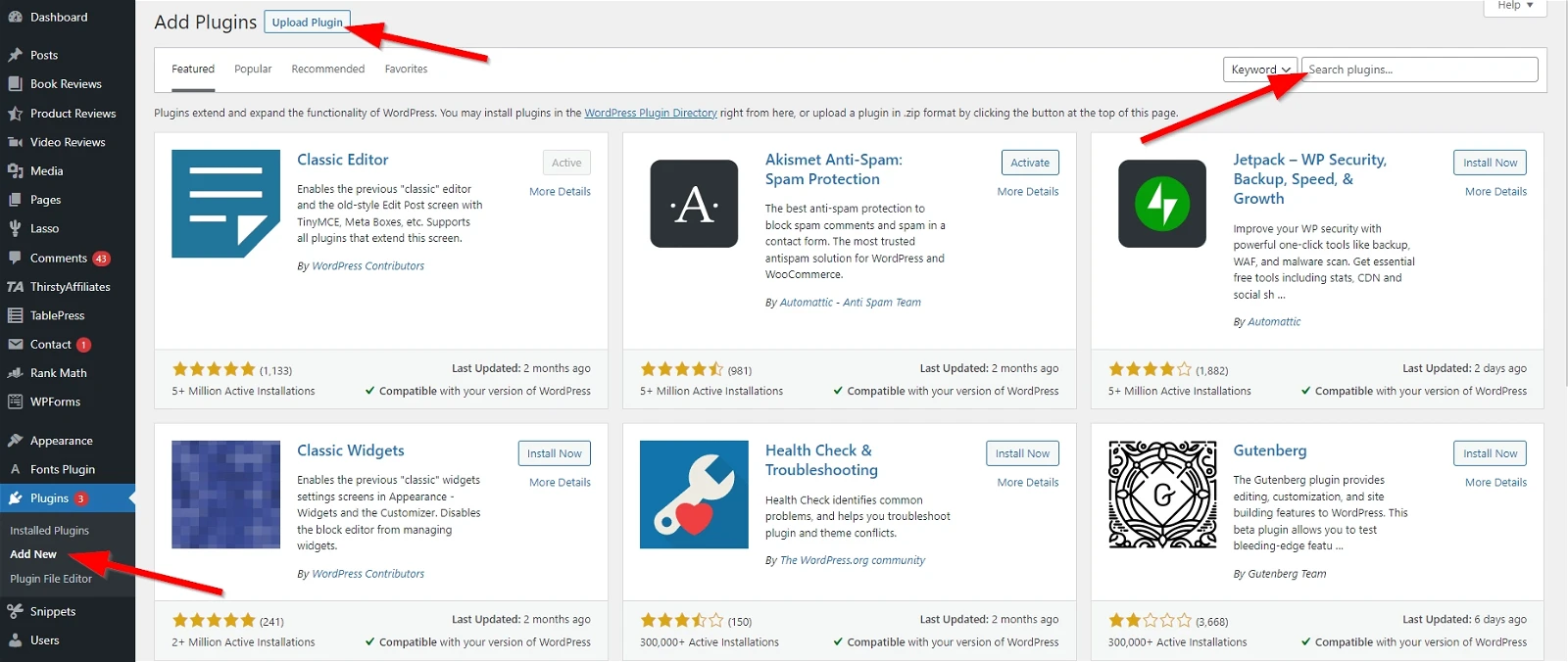
6 Design and Brand Your Food Blog
Once your theme and plugins are set up, it’s time to establish your brand. This includes picking brand colors, picking website fonts, and designing a logo.
Pick Brand Colors
Your brand colors will play a significant role in how people will perceive your food blog.
You don’t want to pick clashing colors that don’t go well together, or it will leave your visitors with a negative impression.
If — like me — you struggled in art class and can barely draw a stick figure, there are some great online tools to help you make it through this step.
The easiest way to choose great colors is with Coolors.co, a free online tool that lets you generate and save compatible color schemes.
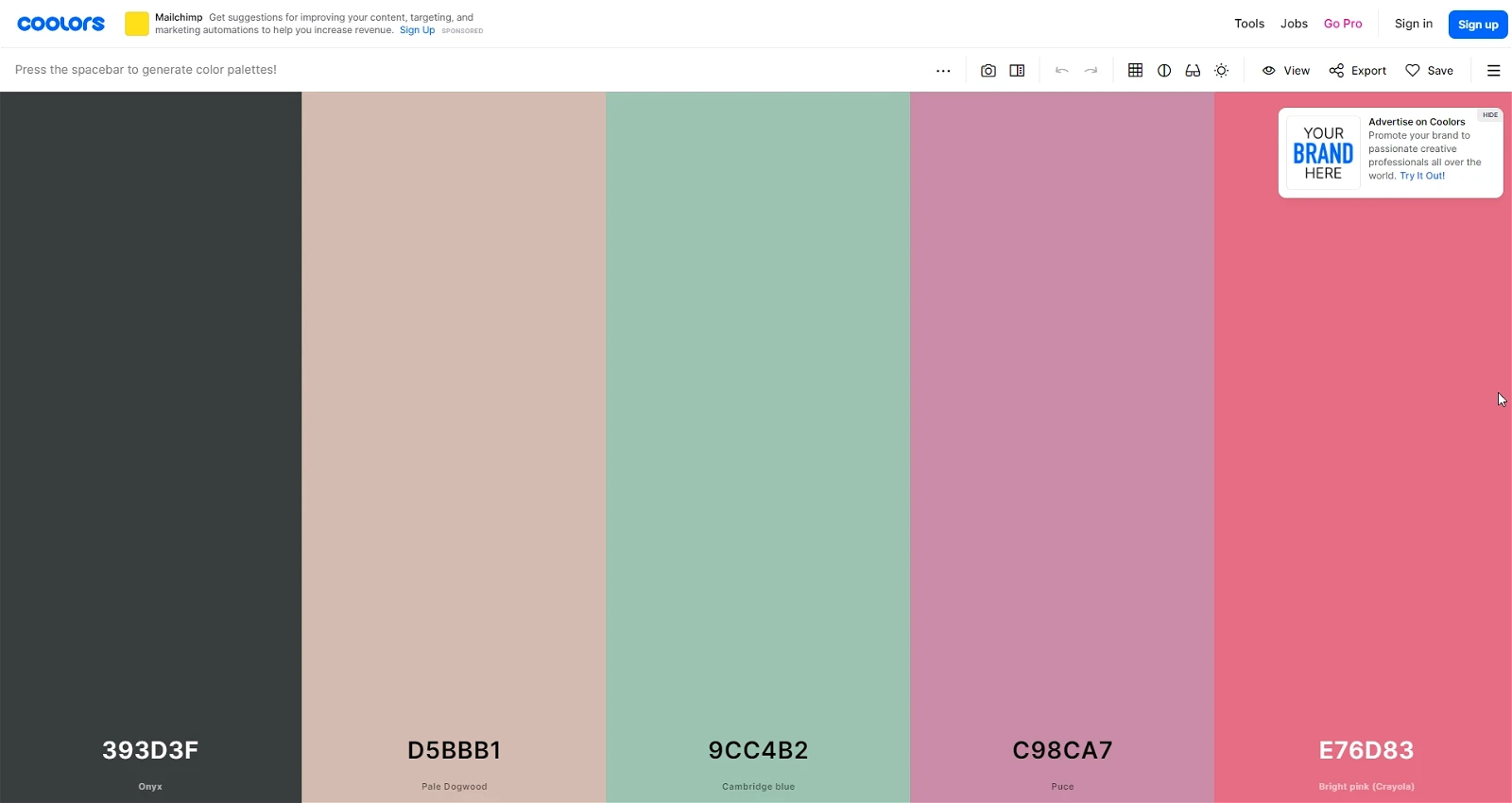
If you need more inspiration, check out BrandColors to see the color schemes used by over 600 major organizations. You can also look at other websites and mirror what’s working for them.
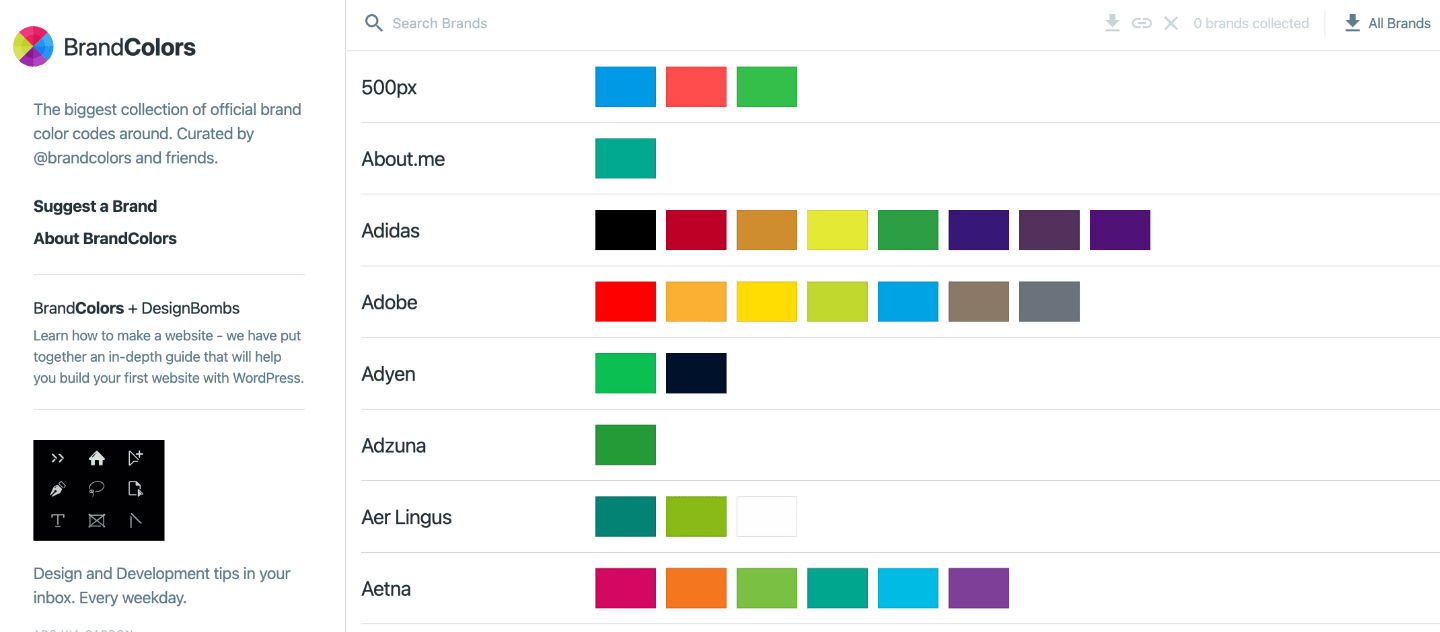
Pick Fonts
Not all fonts are created equal, and choosing the right ones for your food blog is important.
To prove this, a scientist conducted a study to test how font type affects the perceived truth of a statement.
He offered the same statement in one of 6 different fonts to more than 45,000 respondents. One font — Baskerville — elicited significantly more trust than the other options.
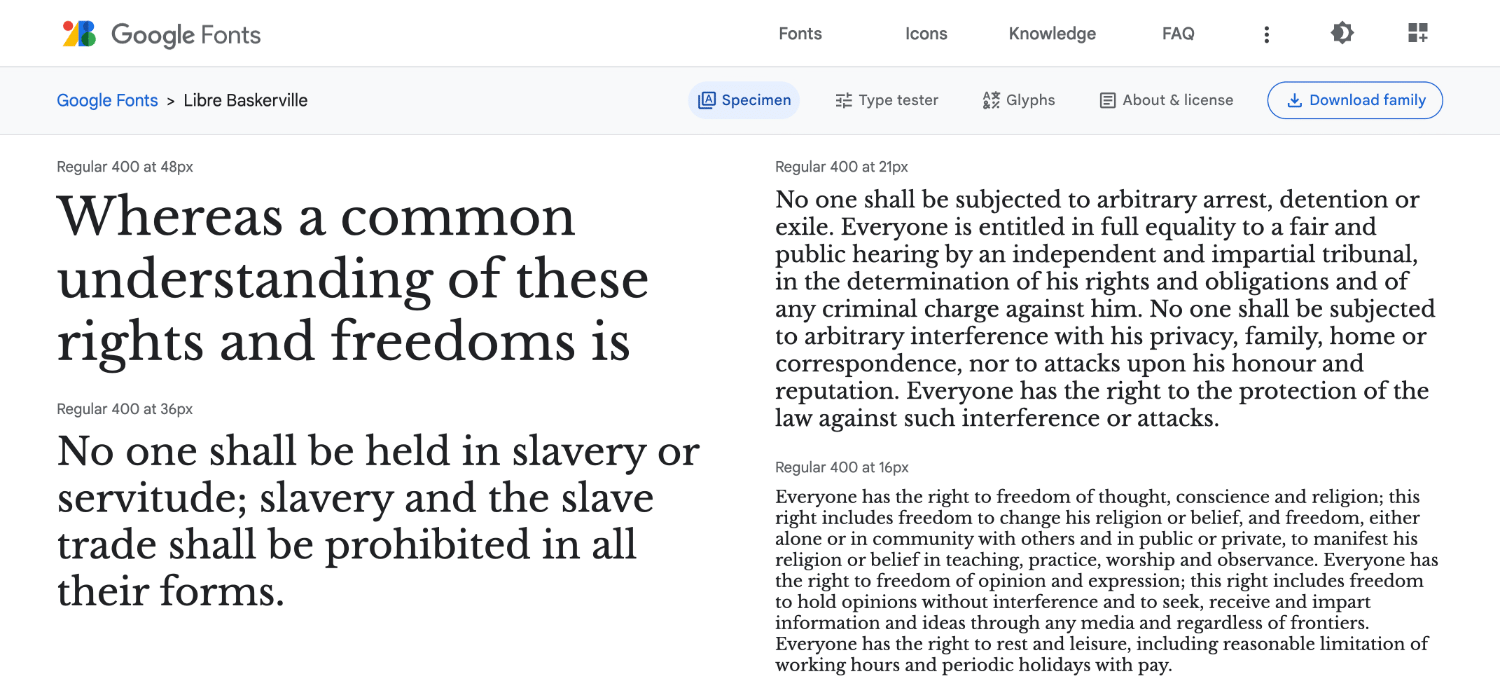
I’m not telling you this to convince you to use Baskerville. I just want to impress that font selection matters. Take a moment to consider whether you’re using a legible font that aligns with your site’s personality.
My favorite font selection tool is Fontpair, a free website that lets you preview and pair different fonts. It also recommends font combinations that work well together, so if you’re moving quickly you can simply pick one of their recommended pairs.
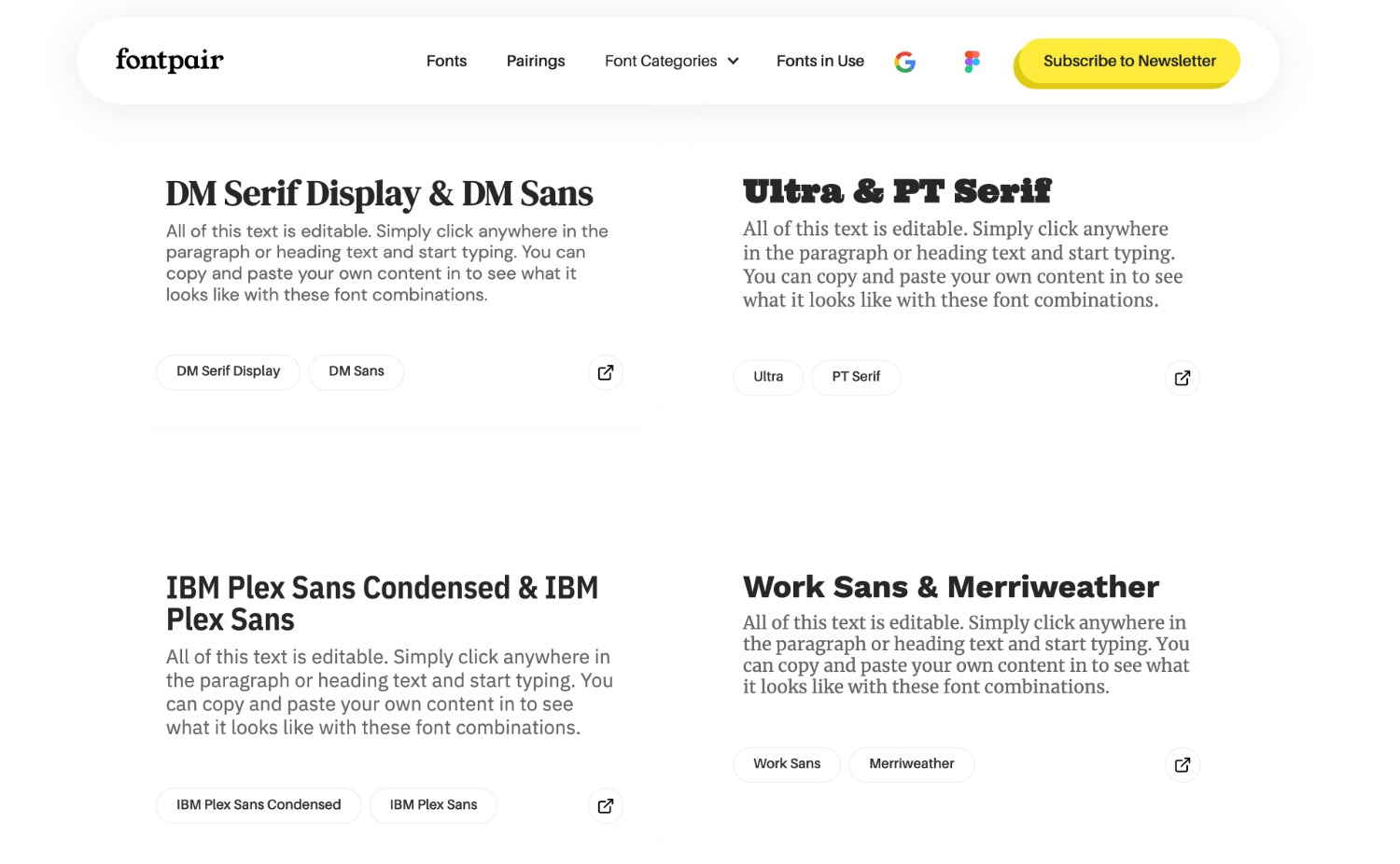
Design Your Logo
Your logo is the centerpiece of your brand. It’s the first thing that people will see when they visit your food blog, and you want to make a good first impression.
To design your logo, I recommend using Canva ‒ a free graphic design tool that lets you create virtually anything, including logos.
If you need some ideas, Canva’s Food Logo Templates page is a great place to start.

You can take inspiration and make your own unique logo, or you can use one of the templates and substitute in your brand colors and website name.
If you’re capable, I do recommend creating a unique logo. Canva is a very popular website, and other blogs have used those templates for their logos. It won’t look good if your logo is a carbon copy of another food blog’s logo.
7 Make Essential Pages for Your Food Blog
At this point, your site infrastructure should be set up, and you’re ready to start publishing content.
However, before you get to that, you need to set up some essential pages on your website. This won’t take long, but it’s an essential step that can protect you legally, improve your SEO, and ensure a great user experience.
Your home page helps visitors quickly understand what your cooking blog is about. It should also provide easy access to important parts of your website, such as category pages, featured posts, and recommended products.
Your about page introduces you and your blog. Share your story, explain why you started the food blog and what your goals are, and any relevant credentials. Be sure to include a photo of yourself or your team.
Your contact page tells people how to get in touch with you. At the very least, include an email address and contact form. Ideally, you should also add a physical address and phone number to boost your legitimacy and SEO.
Your privacy policy and terms & conditions pages are legal boilerplate pages that every site needs. You can generate these pages using the free Privacy Policy Online tool.
The process of generating these pages is straightforward: simply access your WordPress dashboard, go to the Pages section, and select the option to Create a new page.
8 Create Blog Content
Now you can finally start creating content for your food blog. Many people quit before making it to this point, so give yourself a pat on the back.
The first step in content creation is deciding what you’re going to write about.
It’s easy to just start writing about whatever you think people want to hear about, but that’s not the right approach if you’re serious about getting traffic and earning money.
Instead, you should focus on keywords that you know people are searching for. If you rank well, you’re guaranteed to get some blog traffic. Ranking #1 for a search term no one is typing in is useless.
Let me quickly walk you through our proven keyword research process.
Keyword Research and Content Strategy
You’ll want to start by focusing on a small corner of your niche to build topical authority.
For example, if I’m making an air-frying food blog, I might start by writing my first 30 articles about air fryer chicken recipes.
By thoroughly covering one small category within my niche, Google is more likely to perceive me as an expert on that topic, and my content is more likely to rank.
If I were to write one article about the best air fryers, two articles about air frying chicken, and another two about air fryer cooking techniques, I would have thin topical authority in all of those subjects, and I would be less likely to rank for any of them.
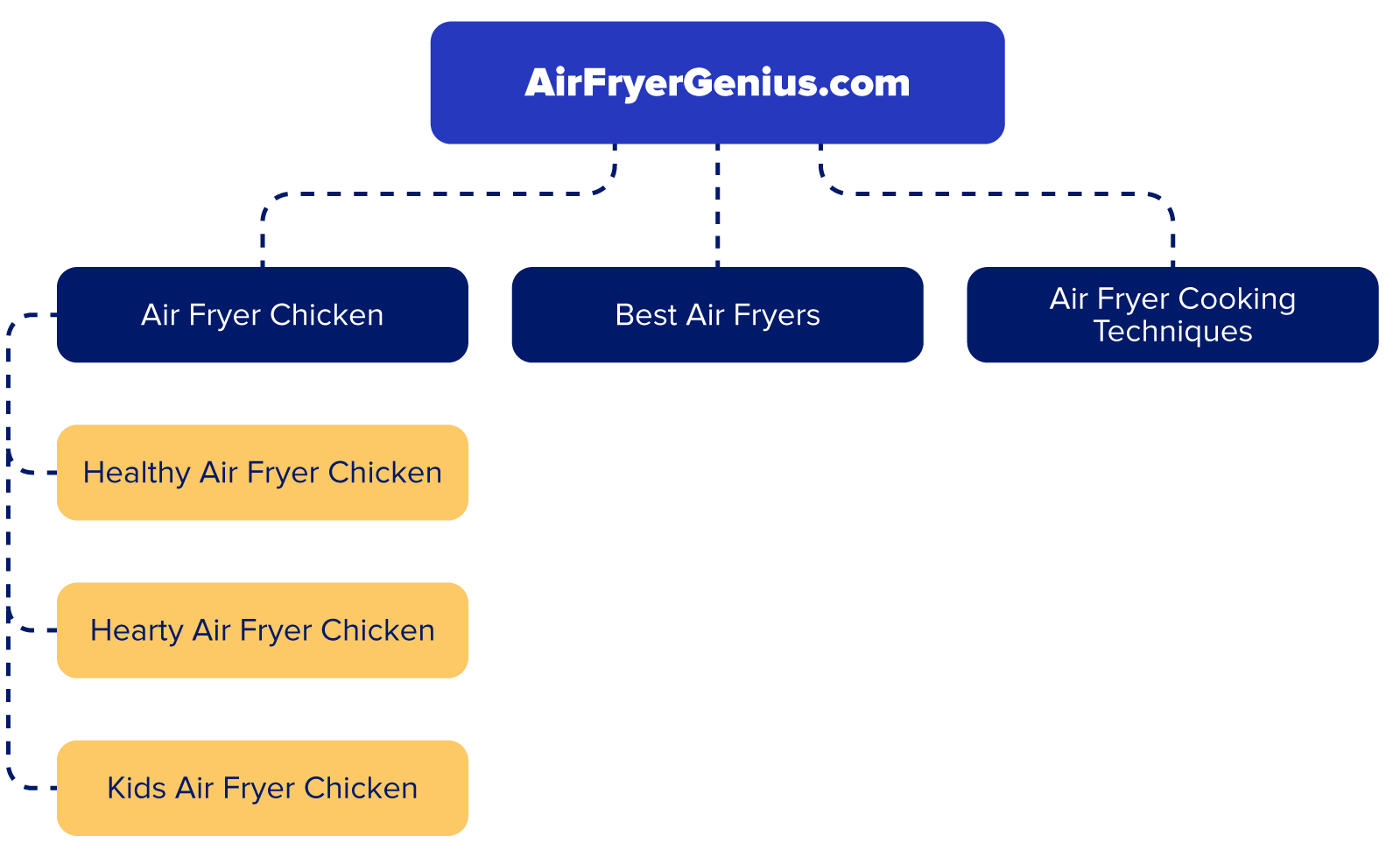
Once you’ve picked the first category you want to cover, you can begin finding keywords that have high traffic potential and low competition.
When it comes to the types of keywords you might want to look for on a food blog, I have a few suggestions:
The first step in content creation is deciding what you’re going to write about.
Create recipe posts. The bread and butter of most food blogs is the recipe post, and you’d be missing out on a lot of traffic if you ignored these.
Answer common questions. These could be questions people have about food, cooking methods, appliances, and anything else related to your niche.
Create recipe roundups. Many of the best food keywords are recipe roundups, where you share a collection of themed recipes from other websites.
To gauge traffic and competition, you’ll need a keyword research tool. I recommend the free Ubersuggest Chrome plugin.
Once you’ve installed Ubersuggest, head to Google and start searching for topics.
You’ll want to analyze the top 10 organic results and look for three telltale signs that your new food blog has a chance of ranking well:
- Websites ranking with ≤ 35 domain authority (a metric that gauges how strong a site’s backlink profile is)
- Posts with ≥ 150 estimated monthly visits
- Articles that don’t meet the search intent of your keyword
If you look at the search results for “do air fryers use oil,” you’ll find that even though some very authoritative sites are ranking, there’s plenty of opportunity for a new food blog to rank well.

For starters, there’s one site with lower than 35 domain authority. And one of the articles just above 35 DR is receiving more than 800 monthly visits.
To add to this, if you look at the titles, many of the top articles aren’t actually relevant to the search query.
For example, titles in the top 5 include “The Biggest Mistakes You’re Making With Your Air Fryer” and “Is Cooking With An Air Fryer Healthy?”.
While these are tangentially related to the query, they don’t actually answer whether air fryers can use oil. And if they do, that information is buried underneath a lot of irrelevant content. Therefore, a new food blog with a great post on “Do Air Fryers Use Oil?” stands a solid chance of beating out these more authoritative sites.
That’s it! Your goal is to find a category in your niche where there are quite a few of these higher-traffic, lower-competition keywords.
Tips for Creating Amazing Blog Content
The quality of your content is the most important determining factor in whether your food blog will succeed.
You could do everything else perfectly, but if your content isn’t helpful or enjoyable to read, you’ll have a hard time making money as a food blogger.
Here are some actionable tips for creating engaging content on your food blog:
Create original content. If you’re making a recipe, don’t simply copy the recipes on other sites. Use their recipes as a base and add to them to create a unique, original recipe no one has seen before.
Take your own photos. People want to see pictures of the food you’re making or discussing. Whether you’re writing about a particular ingredient, making your own dish, or reviewing a restaurant, take food photos and share them on your post.
Add original videos. Google loves when you add supporting videos to your content. If you’re making a recipe, showing how to prepare an ingredient, or reviewing a restaurant, film it, throw it on YouTube, and embed it in your post.
Make your content skimmable. The average browser nowadays has the attention span of a goldfish. Keep them scrolling down your page with short paragraphs, bullet points, numbered lists.
Use an on-page SEO optimization tool like SurferSEO or PageOptimzer Pro. Google looks for certain keywords in certain areas of your content. These tools can help you put the right phrases in the right places and improve your SEO.
Analyze the competition to see what Google wants you to include in your article. If you’re writing a recipe roundup titled “best pasta dinners” and every ranking post has a recipe for Fettucine Alfredo, include that in your article.
Leverage schema markup. Adding schema markup like recipe schema or ItemList schema helps you leapfrog the competition and get displayed at the top of the SERP.
I could write a book on creating blog content, but I’ll leave you with this golden rule for content creation…
If it makes the content more helpful, add it.
9 Promote Your Content
Now that you’ve got some content written, it’s time to promote it.
There are many channels you can do this through. I’ll be focusing on three of the most effective methods: social media, SEO, and email marketing.
Social Media
While this article is about building a food blog, your mindset should be around building a food brand. And that’s where social media becomes a really useful tool.
Here are some of my best social media tips:
Repurpose your original media on social. If you go through the hassle of cooking original dishes, taking photos and videos, use these assets as Instagram posts or reels, TikTok videos, stories or Tweets with images. Use the social platforms reach as a discovery engine for your blog.
Use your bio link to drive traffic to your blog. Once people discover your social content, they’ll often be curious to know who is behind so much awesomeness. Your bio link is the perfect way to send people from social networks back your blog.
For inspiration, check out these successful food accounts on various social media platforms:
Successful food TikTok account:

Successful food Instagram account:

Successful Pinterest account:
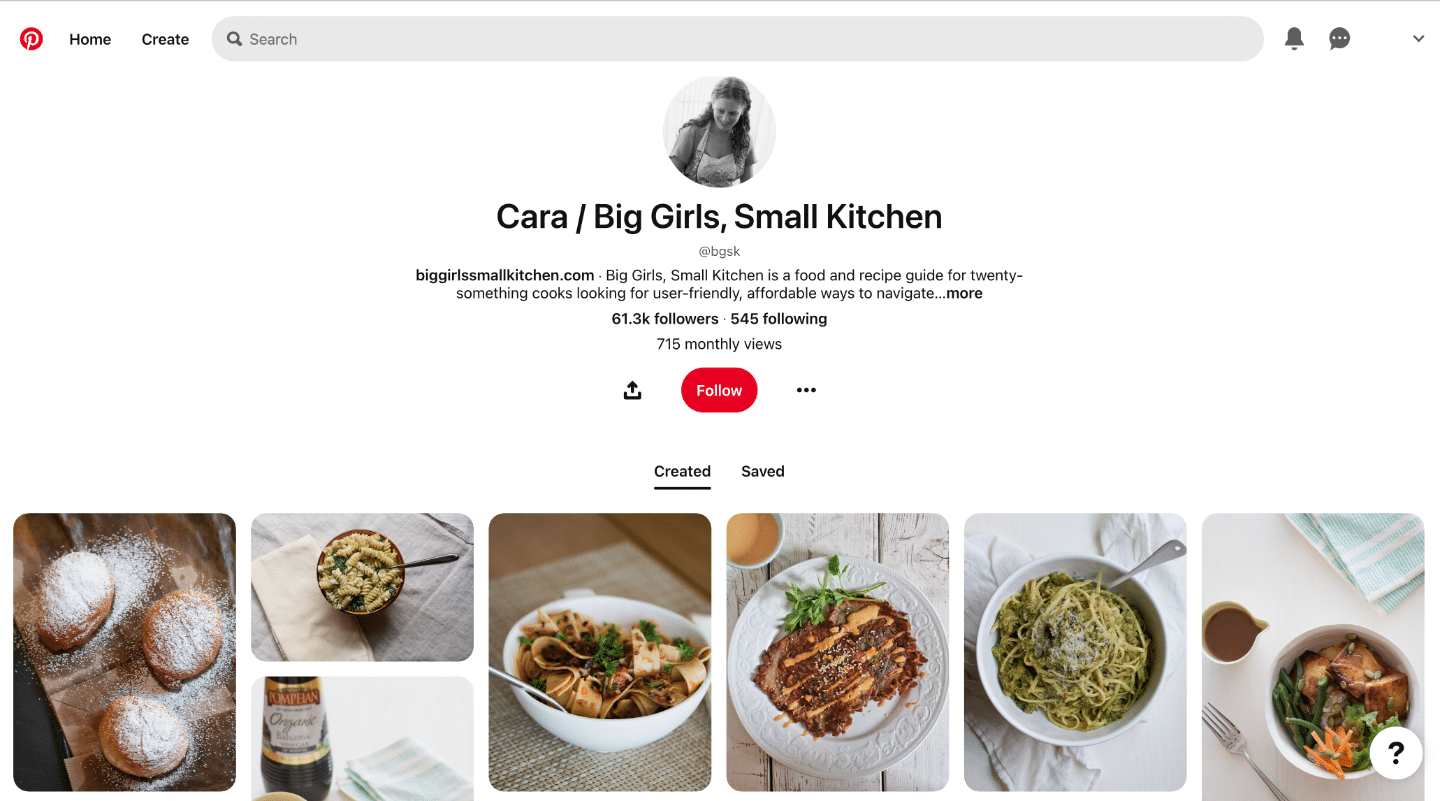
Successful Facebook page:

You can also use these examples as inspiration for choosing a niche. As you can see, you can get very specific and still find an audience.
SEO
Search engine optimization (SEO) is the practice of optimizing your website and blog posts to rank higher in organic search results.
I’ve already mentioned some of the most fundamental SEO tips in other sections, but here’s a quick overview:
- Create awesome content based on keyword research.
- Use RankMath to optimize your entire site for SEO.
- Use an on-page SEO optimization tool to optimize your blog posts.
- View our SEO blog for free, actionable information on succeeding with SEO.
Email Marketing
Email marketing is a great way to drive repeat traffic to your blog.
I’ve done SEO work for one of the biggest food blogs in the world, and they get 10% of their traffic — almost 1,000,000 pageviews per month — just from sending twice-daily emails containing their latest posts.
There is tons of potential for making money with an email list on your food blog, but if you’re just starting out, I recommend simply sending regular emails with new articles and recipes.
To get started, you’ll need email marketing software. I recommend Mailerlite as it’s our preferred option for beginners.
To start capturing emails, you should embed a signup form in your posts or sidebar. You can also create a pop up that asks people to sign up for your email list.
To learn more about email marketing, check out our post on How to Build an Email List and listen to our podcast detailing 8 things we learned collecting 241,713 emails.
10 Monetize Your Food Blog
Once you’re generating solid traffic, you should shift to monetizing that traffic.
Here are eight proven methods for monetizing your food blog:
Display Ads
Ads are an awesome way to monetize your food blog, and it’s the bread-and-butter monetization method for many food bloggers.
The concept is simple: you place display ads on your site and get paid each time someone clicks or views them.
I’ve had great success with display ads. In my best month, I earned nearly $10,000 just because people visited my site and viewed the ads.
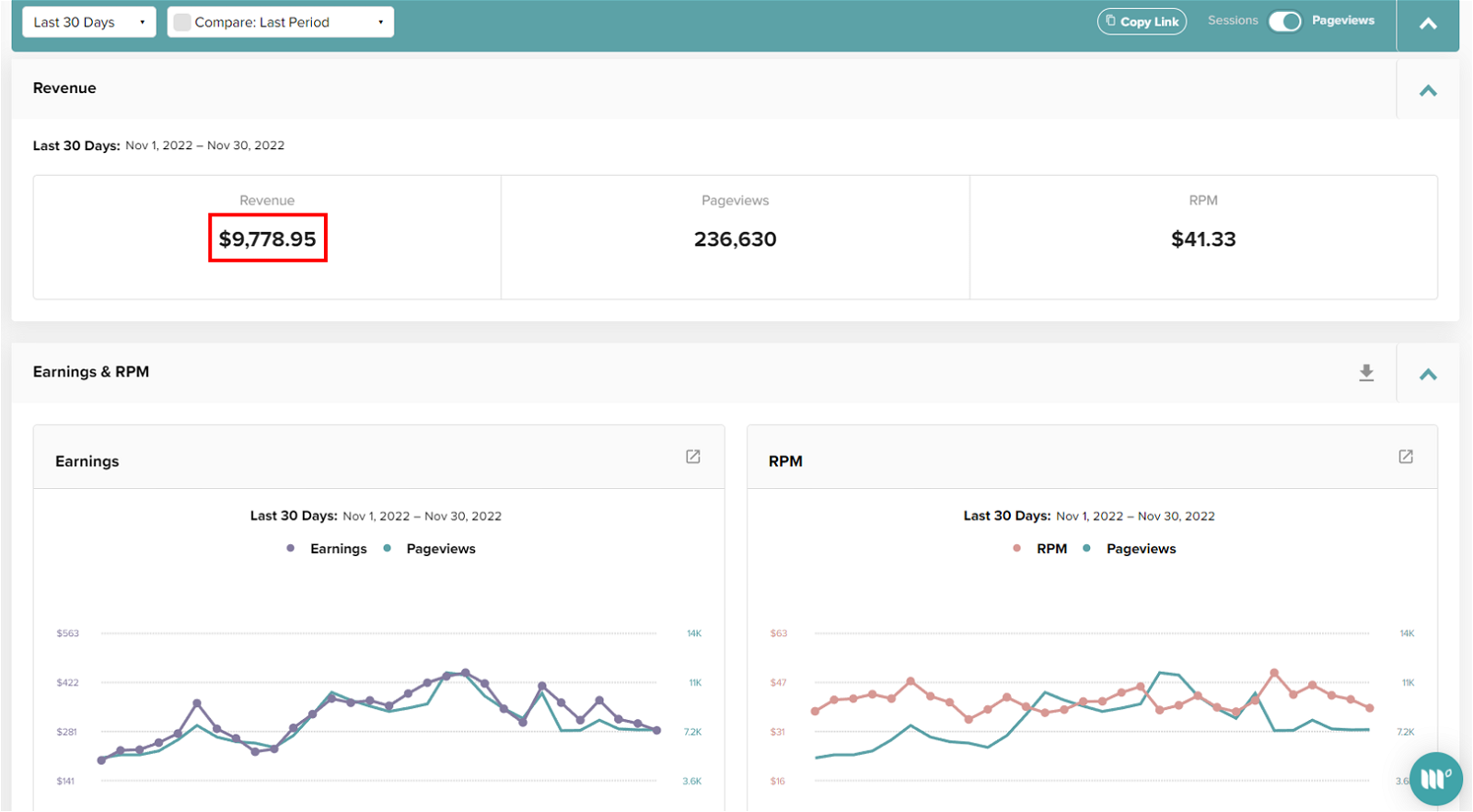
To get set up with ads, you’ll need to apply for an ad network.
I recommend starting out with Ezoic, and then moving on to a higher-paying network like Mediavine once you meet their minimum traffic threshold. (I was using Mediavine when I made the $9,778 you see above.)
Don’t worry about the technical complexities of putting ads on your site – the ad network will take care of everything for you.
Sponsored Content
Companies or other websites will often pay you if you let them post content promoting their products on your website.
This works especially well on social media, where you can show yourself using the product on video. Here’s an example of a sponsored TikTok where the creator got paid to promote an oat milk brand.
Start a Newsletter
In addition to promoting your own content, you can also sell ad space in your newsletters to companies who want to promote their products to your audience. Some bloggers earn most of their income through sponsored emails.
Affiliate Marketing
Affiliate marketing is when you promote another company’s products or services and get paid a commission each time you refer a customer.
There are plenty of affiliate opportunities in the food niche. For example, you can link to ingredients on Amazon or promote meal delivery services like HelloFresh.
If you’re interested in recommending products, check out our list of top-tier food affiliate programs.
Sell Your Own Products
Creating and selling your own products is often the best way to monetize. Your margins are higher compared to affiliate sales, and your audience is more likely to buy because it’s your product, not another company’s.
A common strategy for food blogs is to compile recipes into a cookbook and sell it as a physical book or an ebook.
For example, the food blog Tastes Better From Scratch released a cookbook that became an Amazon bestseller.
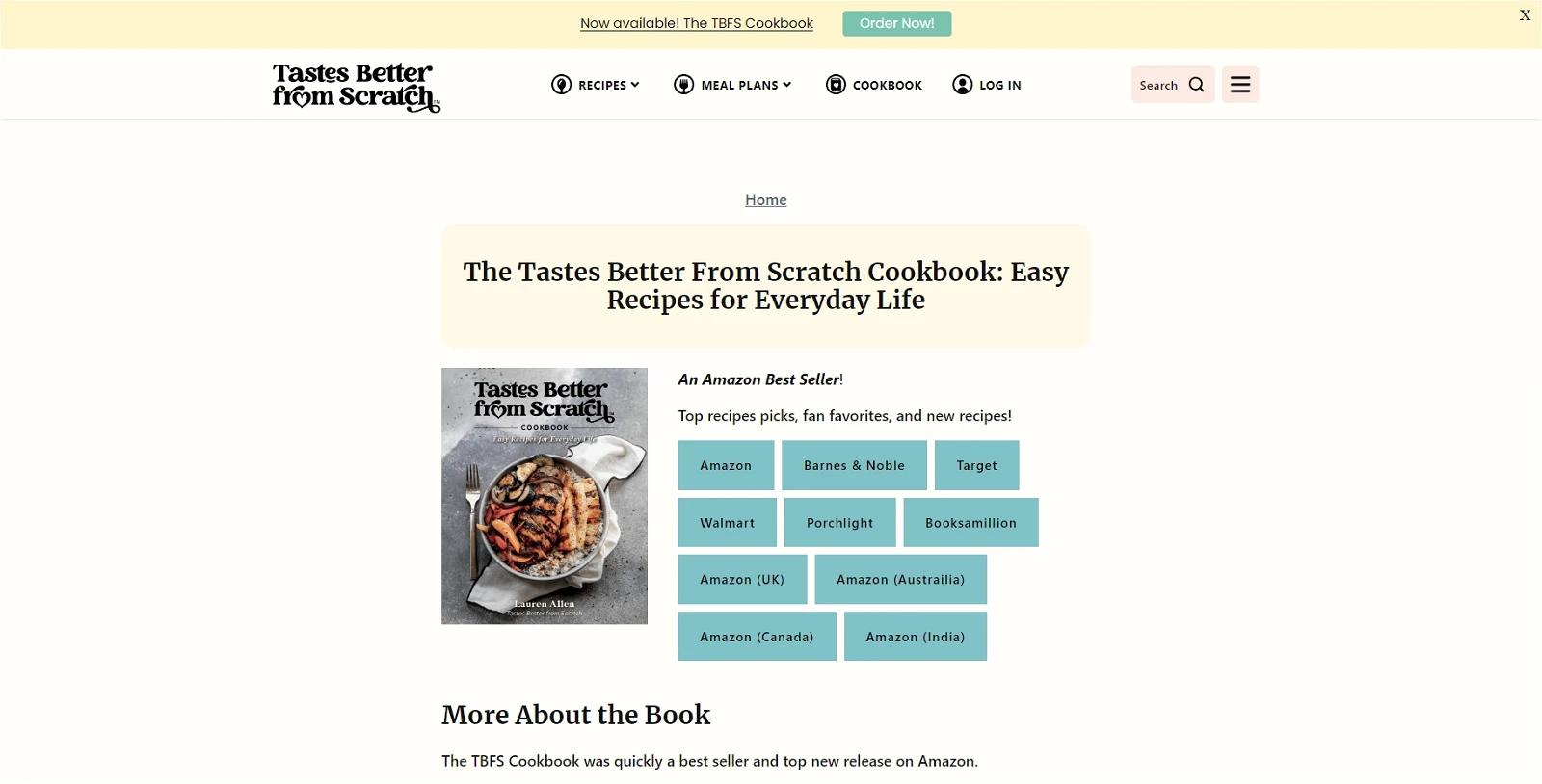
You can also create and sell food-related printables like meal plans, food journals, and nutrition charts.
If you’re really ambitious, you can use your platform to launch your own food products. A prominent example is the Feastables brand of chocolate bars launched by MrBeast.
Sell Online Courses
An awesome way to make money with a food blog is to create and sell online courses related to food.
Here are a few examples of what you can teach:
- Insider secrets for cooking your unique recipes
- A step-by-step course for stocking and organizing your kitchen
- How to come up with your own food recipes.
- Helpful tips for cooking more efficiently
Platforms like Thinkific make it easy to create and sell these courses.
Sell Merchandise
If you’ve got a strong brand, you can design T-shirts, aprons, and other merchandise related to your niche.
Conclusion
I hope this article gave you some insight into how to start a food blog.
If you’re serious about earning real money by becoming a food blogger, I highly recommend signing up for our free authority site training.
In it, you’ll learn 7 hard-won secrets to make new sites 83% more successful.
Take it from me. Thanks in part to the golden strategies I learned in this training, I was able to build a blog that earned $12,000 per month and netted me six figures once I sold it.









